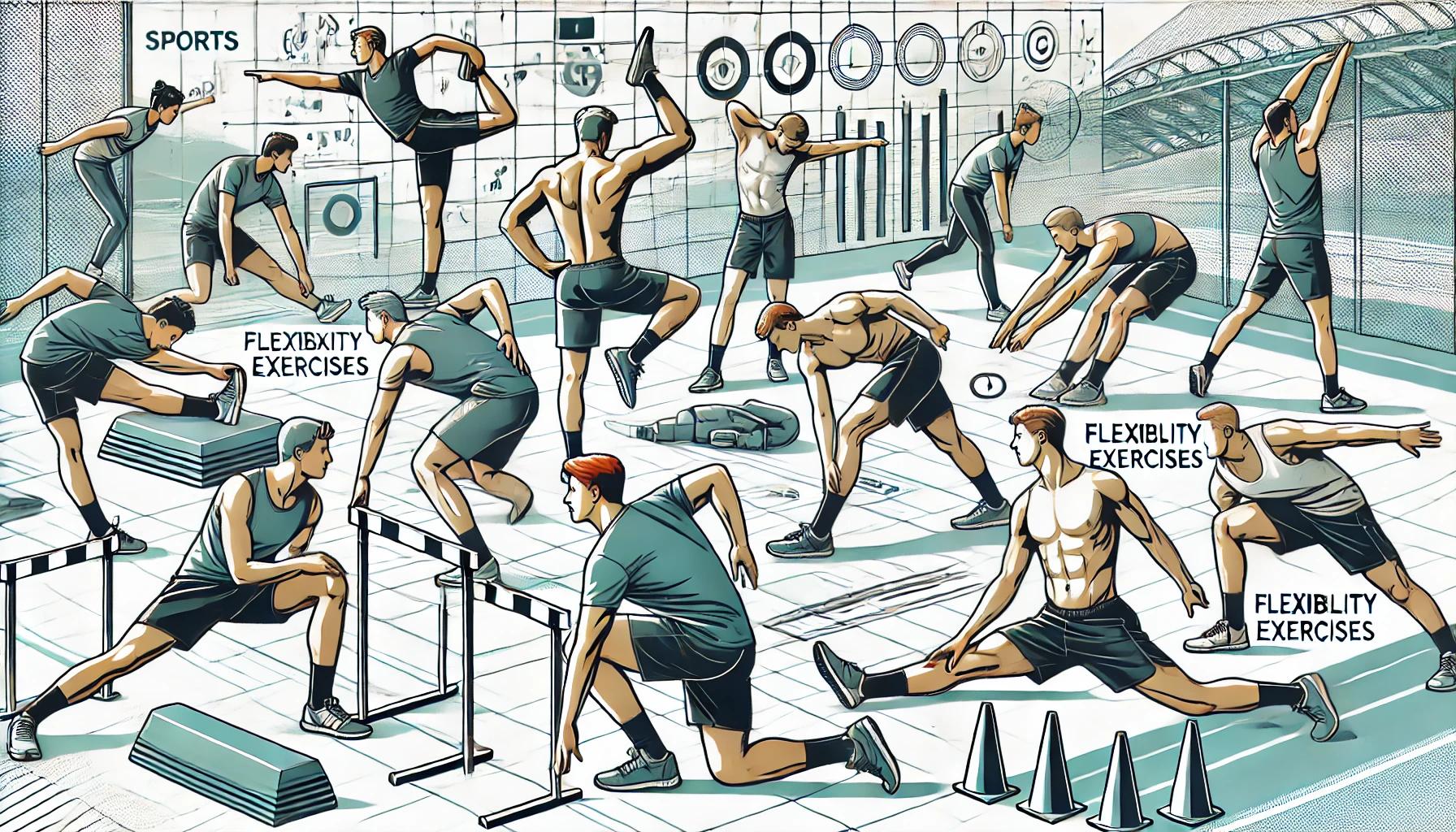Flexibility are an important aspect of performance for any athlete that can lead to better movement efficiency, and reduce the risk of injury while enhancing overall physical health. Training, particularly at higher levels of athleticism can cause tight muscles and limited flexibility (which is a hidden danger in being athletic). This article illustrates essential sport-specific flexibility exercises aimed toward increasing the mobility in joints, muscle elasticity as well joint health.
Advantages of flexibility for athletes
Increased range of motion: having greater mobility at the joints means that your body can move more efficiently and with less restriction compared to an inflexible athlete.
Prevent Injuries: Muscle and joints that are more pliable reduce the risk of strains, sprains as they can withstand additional stress + sudden moves.
Improved Performance: Increased flexibility can better technique and form, providing athletes with an edge over the competition.
Muscle Soreness: Stretching can help in the response and recovery following exercise which is when muscles are sore due to damage or inflammation.
Top Flexibility Drills for Athletes
1. Hamstring Stretch
Target Muscles: Hamstrings
How to Perform:
Sitting on the floor, extend one leg and bend the other with its sole of your foot pressed against inner thigh of extended-leg.
Lean and reach forward to the toes of the extended leg with a flat back.
When you become steady, hold 20-30 seconds and change leg.
Sit on your buttocks with legs long in front of you, lean over one leg to grab the BEST weight that challenges-but doesn’t threaten-the position Benefits: Improves hamstring flexibility-critical for running full out, bounding through bunny hops and even raising a kicker.
2. Quadriceps Stretch
Target Muscles: Quadriceps
How to Perform:
Stand on one leg with the help of a wall or chair if required.
Bring the heel to buttock with opposite knee bent
Use the hand on the same side to grab your ankle, pulling it upwards gently.
Move 2: Grasp and hold for between 20-30 seconds – switch legs.
Resistance Runner Benefits: Helps to mobilize the quadriceps which supports sprinting and explosiveness.
3. Hip Flexor Stretch
Target Muscles: Hip flexors
How to Perform:
Begin by stepping back into a lunge position with one foot forward, the other leg extended all the way to the rear of your body and knee down on mat.
Drive the hips forward, maintaining a straight back.
Hold for 20-30 seconds and repeat the process on both sides.
Benefits: Improves hip mobility and flexibility, essential for movements like running sprints or anytime you change direction.
4. Shoulder Stretch
Target Muscles: Shoulders
How to Perform:
Reach one arm across the body at shoulder height.
So to press the arm in, you are going put one of your hand on that same shoulder and use the otherto lead it gently towards your chest.
Hold for 20 to 30 seconds then repeat with the other arm.
Benefits: Increases the mobility of shoulders important for throwing and overhead movements.
5. Calf Stretch
Target Muscles: Calves
How to Perform:
Stand holding on to the wall, put one foot forward and one back with toe gracing straight.
Put the back heel on the floor, bend front knee just a little.
Do this for 20-30 seconds before switching legs.
Pros: Improves calf flexibility which are key for running, jumping and balancing.
6. Pigeon Pose
Muscles Worked: Glutes and Hip Rotators
How to Perform:
Begin in a plank position.
Bringing one knee forward, place it behind the wrist hover your other leg straight back.
Bend the hips and lean ahead, sitting at once upon your forearms.
Hold for 20 to 30 seconds and switch sides.
Two Essentials: This stretch opens the hips and stretches the glutes which can be good for those who partake in sports that require you to make fast lateral movements.
7. Triceps Stretch
Target Muscles: Triceps
How to Perform:
Extend opposite arm up and bend elbow, lowering hand to upper back.
Press the opposite hand down on your elbow with only a light touch.
Repeat, holding for 20-30 seconds on each side.
Strengths: Increases triceps flexibility (essential for natural movements of throwing and pushing)
8. Seated Forward Bend
Primary movers: Lower back, hamstrings
How to Perform:
1 Sit on floor with legs outstretched in front of you.
Reach forward for the toes, keeping a level back.
Hold for 20-30 seconds.
Pros: Improves lower back and hamstring flexibility for all sports.
Working Stretching Into Your Workout
Warm-Up: Dynamic Stretches – use dynamic stretches as part of your warm-up routine to get the muscles ready for what is about to happen, but will also help improve performance.
Cool-Down: Incorporate static stretching into your cool-down to help recover and decrease muscle stiffness.
Regular stretching is key to staying flexible Consistency: Stretch on a regular basis, at least three times a week.
Pay Attention to Your Body: Stretch Only Up To Mild Discomfort, But Not Pain. Over-reached, can over trained injuries!
Conclusion
Flexibility exercises are key elements of athletic training and provide a wide-variety of benefits for improving performance while reducing injury occurrence. These stretches, if added to your gym routine can help you increase ROM (Range of Motion), muscle elasticity and be a better athlete! But whether you are a runner, basketball player, or gymnast — either way it is necessary for an athlete looking to reach their potential and avoid injuries.
